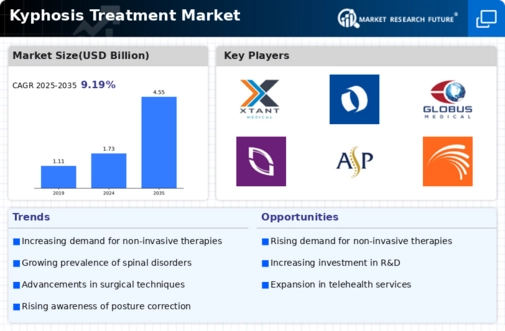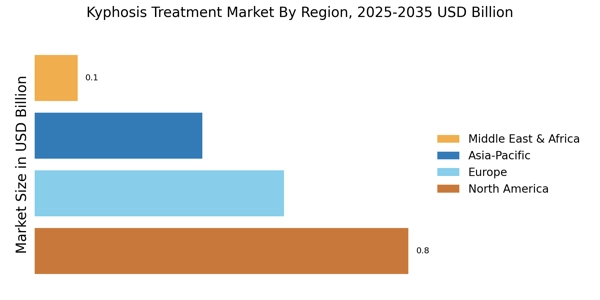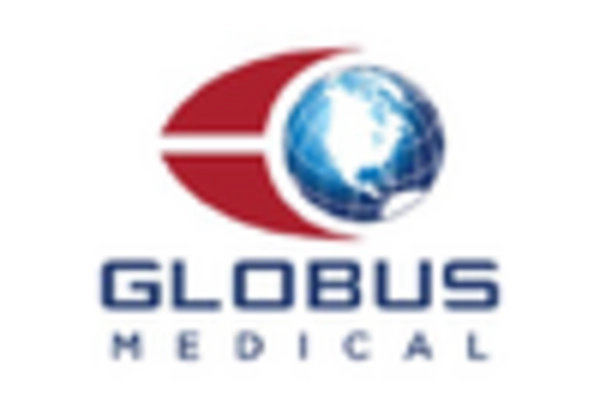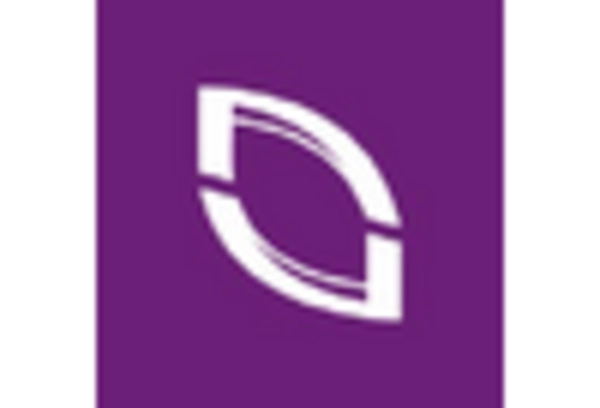Increasing Prevalence of Kyphosis
The rising incidence of kyphosis, particularly among the aging population, appears to be a primary driver for the Kyphosis Treatment Market. As individuals age, the risk of developing spinal deformities increases, leading to a greater demand for effective treatment options. Recent estimates suggest that approximately 20% of older adults may experience some form of kyphosis, which necessitates medical intervention. This growing prevalence is likely to propel the market forward, as healthcare providers seek to address the needs of this demographic. Furthermore, the increasing awareness of spinal health and its impact on overall well-being may contribute to a heightened focus on kyphosis treatment, thereby expanding the market's potential.
Advancements in Surgical Techniques
Innovations in surgical techniques for kyphosis correction are significantly influencing the Kyphosis Treatment Market. Minimally invasive procedures, such as vertebroplasty and kyphoplasty, have gained traction due to their reduced recovery times and lower complication rates. These advancements not only enhance patient outcomes but also attract more individuals seeking treatment. Data indicates that the adoption of these techniques has increased by over 30% in recent years, reflecting a shift in treatment paradigms. As surgical options continue to evolve, the market is likely to experience growth driven by both patient demand and the endorsement of healthcare professionals advocating for these modern approaches.
Growing Focus on Preventive Healthcare
The shift towards preventive healthcare is emerging as a significant driver for the Kyphosis Treatment Market. As awareness of the importance of early intervention increases, more individuals are seeking preventive measures to avoid the progression of kyphosis. Educational campaigns and community health initiatives are likely to play a crucial role in promoting spinal health, encouraging individuals to seek regular check-ups and screenings. This proactive approach may lead to earlier diagnosis and treatment, ultimately reducing the severity of kyphosis cases. The market could see a corresponding increase in demand for both preventive and corrective treatments as a result.
Enhanced Patient Education and Resources
The proliferation of educational resources regarding kyphosis is contributing to the growth of the Kyphosis Treatment Market. Patients are becoming more informed about their conditions and available treatment options, which may lead to increased demand for specialized care. Online platforms, support groups, and informational seminars are empowering individuals to take charge of their spinal health. This heightened awareness is likely to result in more patients seeking consultations and treatments, thereby driving market expansion. As healthcare providers recognize the importance of patient education, they may invest in resources that further enhance understanding and management of kyphosis.
Rising Investment in Healthcare Infrastructure
The expansion of healthcare infrastructure, particularly in developing regions, is poised to impact the Kyphosis Treatment Market positively. Increased investment in hospitals and specialized clinics facilitates access to advanced treatment options for kyphosis. This trend is underscored by government initiatives aimed at improving healthcare services, which may lead to a rise in the number of facilities equipped to handle spinal disorders. As healthcare systems evolve, the availability of resources for diagnosis and treatment is expected to improve, thereby enhancing patient access to kyphosis care. Consequently, this investment is likely to stimulate market growth as more individuals seek treatment.


















Leave a Comment